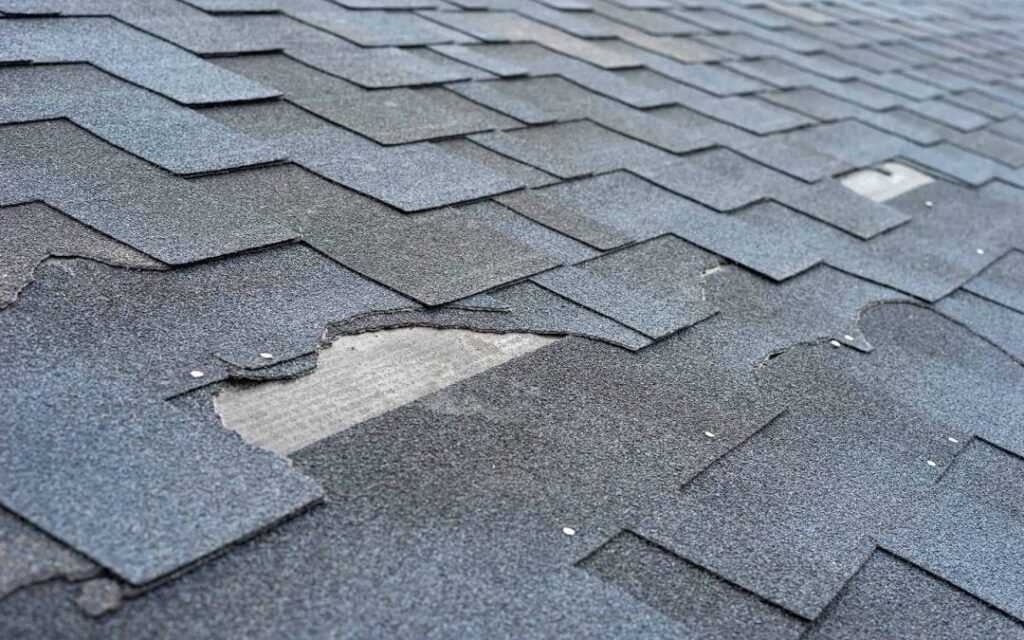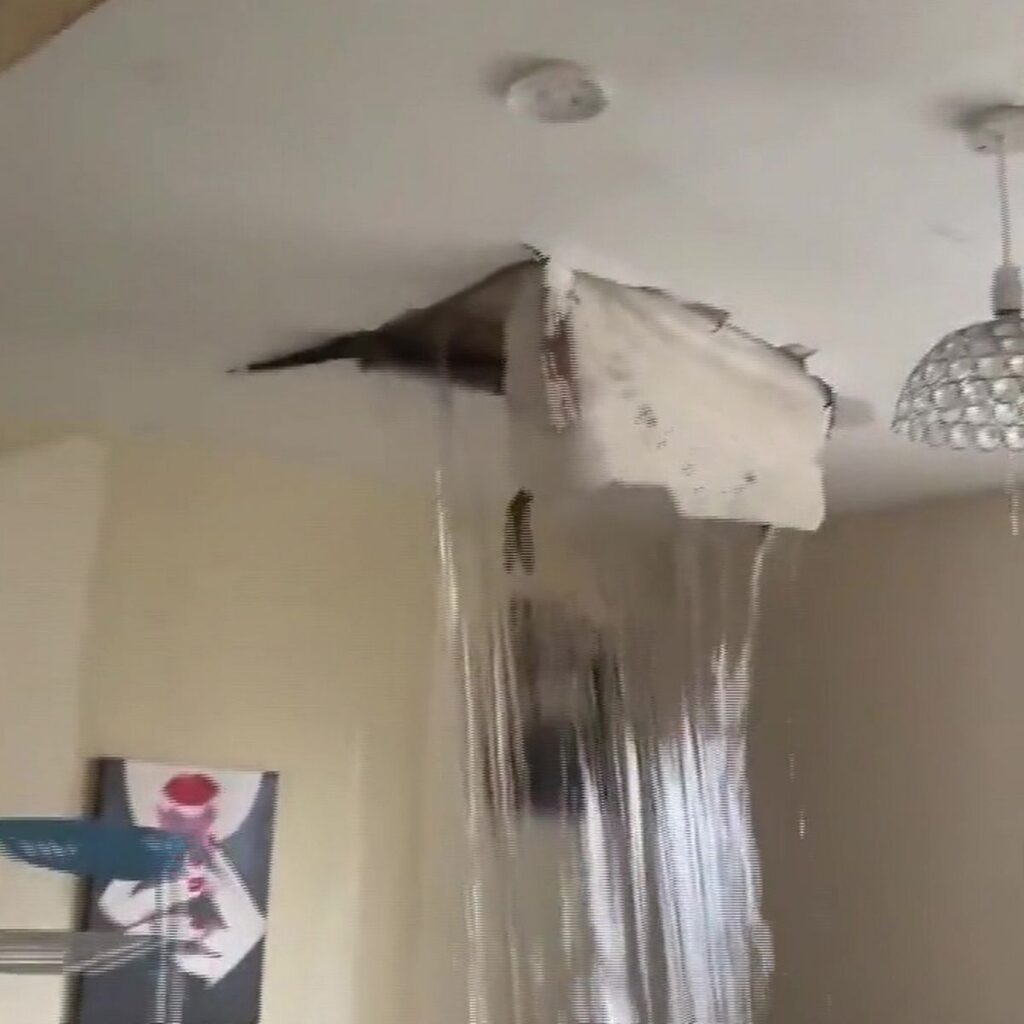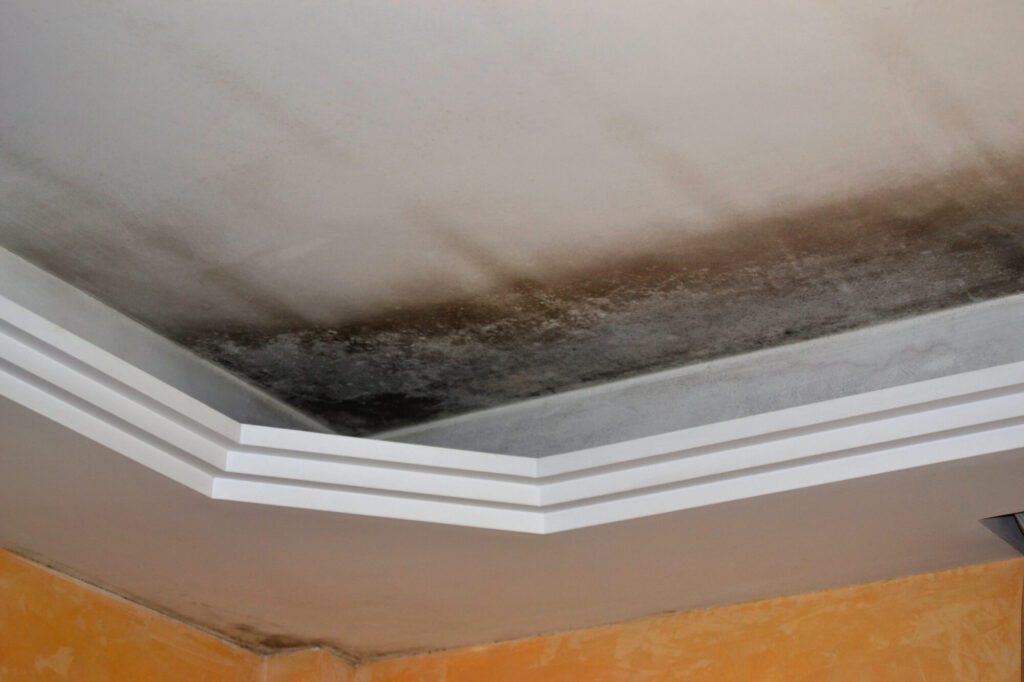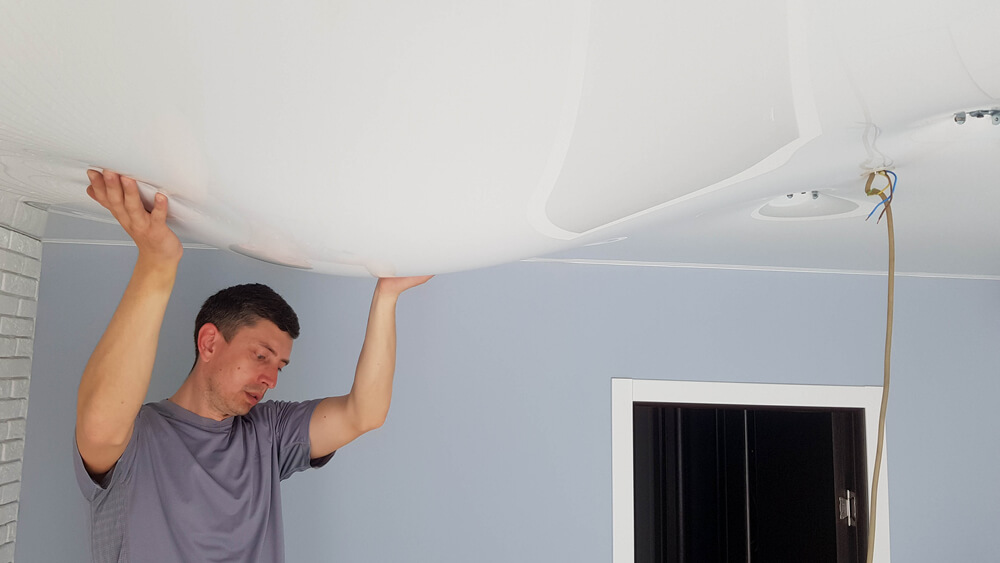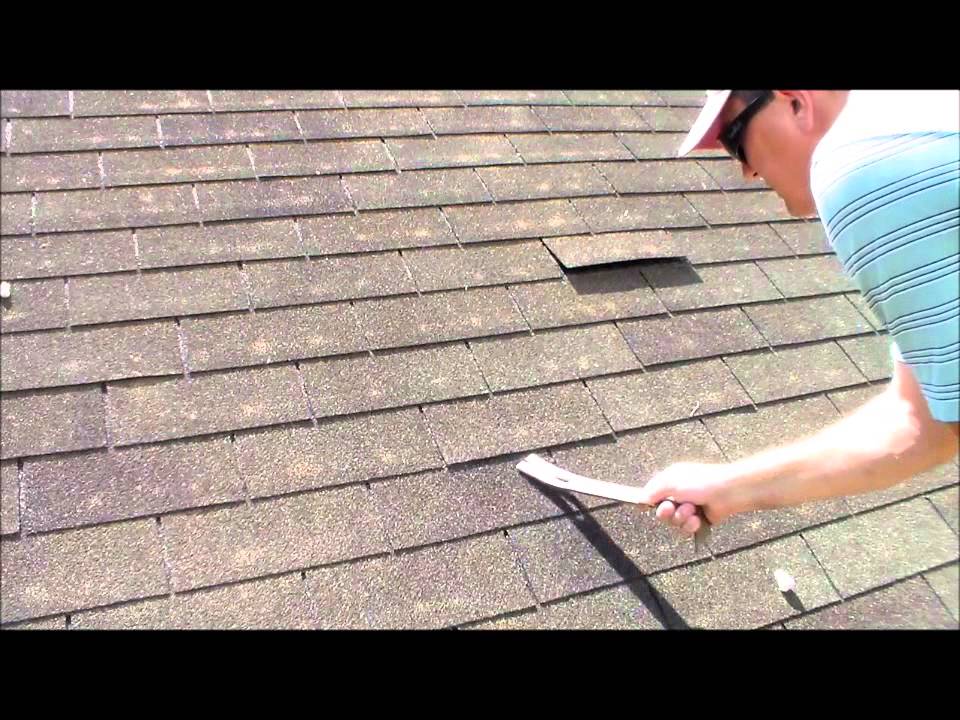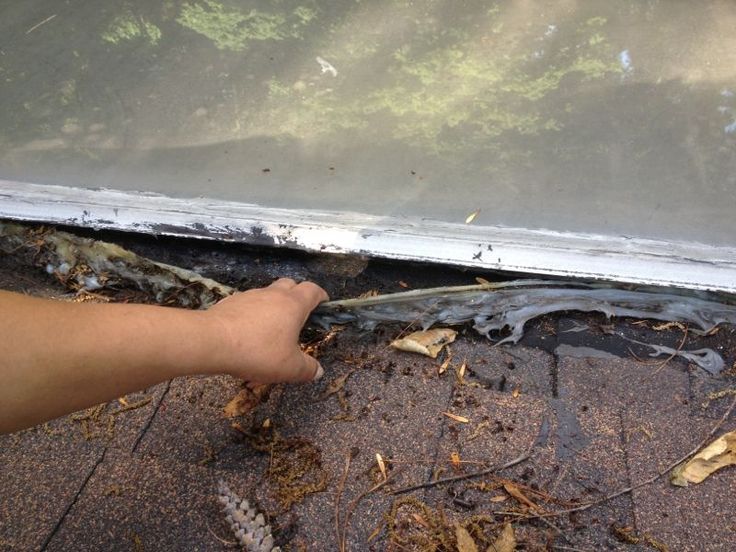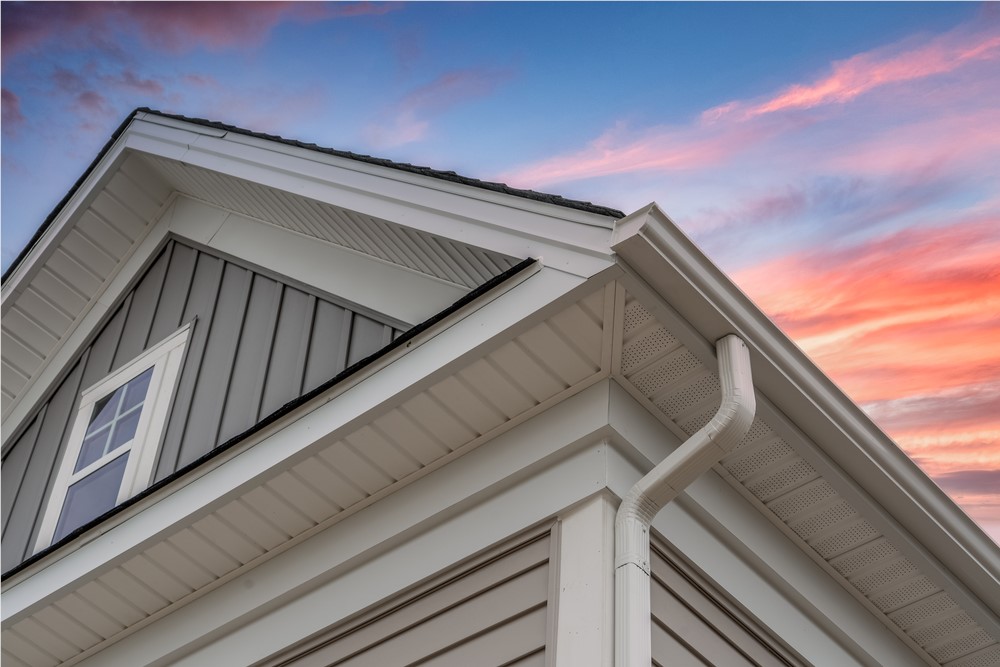Imagine the peace of mind that comes with knowing that your roof will protect you and your loved ones for many years to come. In this article, we will explore the fascinating question of how long a roof should last. With expert insights and practical tips, we will unveil the factors that affect a roof’s lifespan and share valuable advice on how to maximize its durability. Whether you’re a homeowner contemplating a new roof or simply curious about the maintenance of this integral part of your home, this article is a must-read for everyone seeking to understand the longevity of their roof.


Factors that influence the lifespan of a roof
Climate
The climate in which you live plays a significant role in determining the lifespan of your roof. Extreme weather conditions such as heavy rain, snow, hail, and high winds can cause damage to your roof over time. Regions with intense heat or frequent temperature fluctuations can also negatively impact the longevity of your roof.
Material
The type of material used for your roof can greatly influence its lifespan. Different materials have varying degrees of durability and resistance to natural elements. Some common roofing materials include asphalt shingles, metal roofs, wood shingles or shakes, slate roofs, concrete or clay tiles, EPDM rubber roofs, built-up roofing, modified bitumen, solar tiles, and green roofs. Each material has its own expected lifespan, which we will explore further.
Installation quality
The quality of installation is crucial in determining how long your roof will last. A poorly installed roof can result in premature damage and reduce its overall lifespan. It is important to hire a professional and reputable roofing contractor who has the expertise and experience to properly install your roof.
Maintenance
Regular maintenance is essential for the longevity of your roof. Neglecting maintenance tasks can lead to damage over time and shorten the lifespan of your roof. Routine inspections, cleaning gutters, removing debris, and addressing any issues promptly are all crucial in maintaining the health of your roof.
Roof slope
The slope or pitch of your roof can affect its lifespan. Roofs with steeper slopes tend to have better water runoff and are less prone to water damage. A steep roof also allows for better ventilation, which can help prolong the life of your roof.
Ventilation
Proper ventilation is essential for the longevity of your roof. Adequate airflow prevents moisture buildup, which can lead to mold, rot, and other damage. Poor ventilation can cause the roof to deteriorate more quickly, reducing its lifespan.
Attic insulation
Insulation in your attic not only helps regulate the temperature inside your home but also plays a role in protecting your roof. Proper attic insulation can prevent heat and moisture from damaging your roof, thus extending its lifespan.
Color
The color of your roof can impact its lifespan, especially in regions with intense sunlight. Light-colored roofs tend to reflect more sunlight and heat, reducing the strain on the roof and prolonging its durability. Dark-colored roofs absorb more heat, which can accelerate the aging process and lead to premature deterioration.
Exposure to natural elements
The exposure of your roof to natural elements such as sunlight, rain, snow, and wind can affect its lifespan. Roofs constantly exposed to harsh conditions may deteriorate faster than those in more protected environments. Understanding the local weather patterns and taking necessary precautions can help mitigate the effects of exposure.
Roof pitch
The pitch or steepness of your roof can impact its lifespan. Roofs with a higher pitch tend to shed water more effectively, reducing the risk of water damage and extending the lifespan of the roof. Additionally, a steep roof can help prevent the buildup of leaves, debris, and snow, reducing the likelihood of damage.
Types of roofing materials and their expected lifespan
Asphalt shingles
Asphalt shingles are one of the most popular roofing materials due to their affordability and ease of installation. The lifespan of asphalt shingles can vary depending on factors such as climate, quality of installation, and maintenance. On average, asphalt shingles can last around 20 to 30 years.
Metal roofs
Metal roofs are known for their longevity and durability. They can withstand severe weather conditions and have a lifespan of 40 to 70 years or more, depending on the type of metal used and proper maintenance.
Wood shingles or shakes
Wood shingles or shakes give a natural and charming look to a roof. However, they require regular maintenance and are more susceptible to rot, mold, and insect damage. With proper care, wood shingles or shakes can last for 30 to 50 years.
Slate roofs
Slate roofs are highly durable and can last for over 100 years with proper installation and maintenance. They are resistant to fire, rot, and insects, making them an excellent choice for homeowners seeking a long-lasting and aesthetically pleasing roof.
Concrete or clay tiles
Concrete or clay tiles are known for their durability and longevity. With proper installation and maintenance, these roofs can last for 50 to 100 years or more. However, they are heavier than other roofing materials and may require additional structural support.
EPDM rubber roofs
EPDM rubber roofs have gained popularity due to their affordability and resistance to UV rays and ozone. With regular maintenance, EPDM roofs can have a lifespan of around 20 to 25 years.
Built-up roofing
Built-up roofing consists of multiple layers of roofing felt and asphalt or tar. With proper installation and maintenance, it can last for 20 to 30 years. Regular inspections and maintenance are crucial to prevent leaks and extend its lifespan.
Modified bitumen
Modified bitumen roofing is a durable and flexible material suitable for flat or low-slope roofs. It can withstand a wide range of weather conditions and has a lifespan of around 20 to 30 years with proper maintenance.
Solar tiles
Solar tiles are a relatively new and innovative roofing material that combines energy efficiency with aesthetics. Their lifespan can vary depending on the quality of materials and installation.
Green roofs
Green roofs, also known as vegetative roofs, consist of living plants and vegetation layered on top of a waterproof membrane. The lifespan of a green roof can vary depending on the type of plants used, maintenance, and climate conditions.
Average lifespan of common roofing materials
Asphalt shingles
On average, asphalt shingles have a lifespan of 20 to 30 years.
Metal roofs
Metal roofs can last for 40 to 70 years or more, depending on the type of metal.
Wood shingles or shakes
Wood shingles or shakes can last for 30 to 50 years with proper maintenance.
Slate roofs
Slate roofs can last for over 100 years with proper installation and maintenance.
Concrete or clay tiles
Concrete or clay tiles have a lifespan of 50 to 100 years or more with proper care.
EPDM rubber roofs
EPDM rubber roofs can last for around 20 to 25 years with regular maintenance.
Built-up roofing
Built-up roofing typically lasts for 20 to 30 years with proper installation and maintenance.
Modified bitumen
Modified bitumen roofing has a lifespan of around 20 to 30 years with proper maintenance.
Solar tiles
The lifespan of solar tiles can vary depending on the quality of materials and installation.
Green roofs
Green roofs’ lifespan depends on factors such as plant selection, maintenance, and climate.
Signs that indicate the need for a roof replacement
Age of the roof
One of the most common signs that it’s time for a roof replacement is the age of the roof. Most roofing materials have an expected lifespan, and if your roof is nearing or past that lifespan, it may be time for a replacement.
Missing or damaged shingles
If you notice missing or damaged shingles on your roof, it’s a clear indication that repairs or a replacement may be necessary. Missing shingles leave vulnerable areas exposed to water damage, which can lead to leaks and other issues.
Roof leaks
Leaks are a clear indication that your roof needs attention. Persistent leaks, even after repairs, may indicate that the roof has reached the end of its lifespan and requires replacement.
Sagging or uneven roof
A sagging or uneven roof is a serious issue that should not be ignored. It can indicate structural damage or weakened support, which poses a significant risk to the overall integrity of the roof.
Cracked or curling shingles
Cracked or curling shingles are signs of age and wear. As shingles age, they become less effective at protecting your home from water damage. If you notice cracked or curling shingles, it’s time to consider a roof replacement.
Excessive granule loss
If you find an excessive amount of granules from your shingles in your gutters or downspouts, it may indicate that your roof is reaching the end of its lifespan. Granule loss can compromise the integrity and protective qualities of the shingles.
Moss or algae growth
The presence of moss or algae on your roof indicates that moisture is being retained, which can lead to deterioration of the shingles over time. Moss or algae growth should be addressed promptly to prevent further damage.
Signs of rot or decay
Any signs of rot or decay on your roof, such as soft or spongy areas or visible wood damage, should not be ignored. These issues can compromise the structural integrity of the roof and require immediate attention.
Visible wear and tear
If your roof shows visible signs of wear and tear, such as cracking, blistering, or peeling, it may be time for a replacement. These signs indicate that the roof is no longer providing adequate protection.
Interior water damage
Water stains, mold, or other signs of water damage on the interior of your home suggest that your roof is leaking. Regularly check your attic or ceilings for any signs of water infiltration.


How to extend the lifespan of your roof
Regular inspections
Regular roof inspections are crucial for identifying potential issues early on. Schedule professional inspections at least once a year, and perform visual inspections yourself after significant weather events.
Prompt repairs
Address any roofing issues promptly to prevent further damage. If you notice missing shingles, leaks, or other signs of damage, contact a professional roofing contractor to assess the situation and make necessary repairs.
Proper attic ventilation
Ensure your attic is properly ventilated to prevent heat and moisture buildup. Good airflow helps protect the roof and extends its lifespan by reducing the risk of mold, rot, and other damage.
Effective insulation
Proper insulation in your attic helps regulate temperature and prevents heat transfer from affecting the roof. This can help prevent ice dams, reduce energy costs, and improve the lifespan of your roof.
Gutter maintenance
Regularly clean your gutters and downspouts to prevent clogs and water buildup. Clogged gutters can cause water to back up under the roof shingles, leading to water damage and reducing the lifespan of the roof.
Preventing ice dams
In cold climates, ice dams can form on the edges of the roof, causing water to back up and potentially damage the roof. Proper insulation, ventilation, and removing snow build-up can help prevent the formation of ice dams.
Trimming overhanging trees
Trees near your roof can pose a risk of damage from falling branches or rubbing against the roof surface. Regularly trim branches that overhang your roof to prevent potential damage.
Avoiding excessive foot traffic
Avoid unnecessary foot traffic on your roof, as it can cause damage to the shingles or other roofing materials. Only walk on your roof when necessary and take precautions to avoid causing harm.
Cleaning roof debris
Regularly remove debris such as leaves, branches, and moss from your roof. Debris can trap moisture and lead to water damage or rot. Use proper cleaning techniques to avoid damaging the roof while removing debris.
Professional maintenance
Hiring a professional roofing contractor for regular maintenance can help extend the lifespan of your roof. They have the knowledge and expertise to spot potential issues early on and perform necessary maintenance tasks.
Factors to consider when choosing a new roof
Lifespan
Consider the expected lifespan of the roofing material when choosing a new roof. Determine whether the lifespan aligns with your long-term goals and budget.
Cost
Roofing materials vary in cost, so consider your budget when choosing a new roof. Balance the upfront cost with the expected lifespan and maintenance needs of the material.
Appearance
The aesthetic appeal of your roof is important, as it contributes to the overall look of your home. Choose a roofing material and color that enhances the appearance of your house.
Climate suitability
Consider the climate in which you live and choose a roofing material that is suited to those conditions. Some materials perform better in hot or cold climates, while others are more resistant to high winds or heavy rain.
Environmental impact
If environmental sustainability is a priority for you, consider choosing roofing materials that are environmentally friendly. Some materials are recyclable or made from sustainable sources.
Installation requirements
Different roofing materials have different installation requirements. Some may require additional structural support or specialized installation techniques. Consider the installation requirements and ensure they align with your budget and timeline.
Energy efficiency
Energy-efficient roofing materials can help reduce heating and cooling costs. Look for materials that are reflective or have high insulation properties to maximize energy efficiency.
Warranty
Check the warranty offered by the manufacturer and the roofing contractor. Understand the terms and conditions of the warranty, including any maintenance requirements, to ensure proper coverage.
Maintenance needs
Different roofing materials require varying levels of maintenance. Consider the time, effort, and cost required to maintain the roof and choose a material that aligns with your maintenance capabilities and preferences.
Resale value
If you plan to sell your home in the future, consider the resale value of the roofing material. Certain materials may have a higher appeal and can potentially increase the value of your home.


Importance of professional roof inspections
Identifying hidden issues
Professional roof inspections help identify hidden issues that may not be visible to the untrained eye. Roofing experts have the experience and knowledge to spot potential problems and address them before they become major issues.
Ensuring safety
Roof inspections are not only about maintaining the lifespan of your roof but also ensuring the safety of your home and its occupants. Detecting and repairing any structural or safety concerns is crucial for the overall well-being of your property.
Protecting your investment
A roof is a significant investment in your home, and regular inspections help protect that investment. By identifying and addressing issues early on, you can avoid costly repairs or premature roof replacements.
Maintaining roof warranty
Many roofing warranties require regular inspections and maintenance to remain valid. By scheduling professional roof inspections, you ensure that you fulfill the requirements of the warranty, protecting yourself from potential out-of-pocket expenses.
Detecting early signs of damage
Roof inspections help detect early signs of damage, such as leaks, cracked shingles, or rot. By addressing these issues promptly, you can prevent further damage to your roof and avoid more costly repairs in the future.
Providing accurate assessment
Roofing professionals can provide you with an accurate assessment of the condition of your roof. This assessment includes identifying any areas that need attention and making recommendations for repairs or replacements.
Preventing further damage
By identifying and addressing issues early on, you can prevent further damage to your roof and your property. Prompt repairs or replacements save you from potential water damage, mold growth, or structural issues.
Extending roof lifespan
Regular roof inspections and maintenance help extend the lifespan of your roof. By identifying and addressing issues promptly, you can maximize the durability and longevity of your roof.
Improving energy efficiency
Roof inspections can identify areas that may be affecting the energy efficiency of your home. By addressing issues such as inadequate insulation or ventilation, you can optimize your home’s energy efficiency and potentially reduce energy costs.
Finding cost-effective solutions
Professional roof inspections help you find cost-effective solutions to your roofing issues. Roofing experts can provide you with options that suit your budget and minimize the impact on your finances.
Common misconceptions about roof lifespan
Roofs lasting a lifetime
Contrary to popular belief, most roofs do not last a lifetime. While some roofing materials may have extended lifespans, it is important to have realistic expectations and understand the lifespan of your specific roof material.
Shorter lifespan expectations
On the other hand, some homeowners may underestimate the lifespan of their roofs. With proper installation, maintenance, and care, many roofs can have longer lifespans than initially anticipated.
All roofs are the same
Not all roofs are the same, and the lifespan of a roof can vary depending on factors such as material, installation quality, and maintenance. It is important to choose the right roofing material and invest in professional installation and regular maintenance to prolong the lifespan of your roof.
No maintenance needed
Some homeowners assume that once a roof is installed, no further maintenance is required. Neglecting regular maintenance tasks can shorten the lifespan of your roof and lead to costly repairs or premature replacements.
Warranties guarantee the lifespan
While warranties offer protection against certain defects or issues, they do not guarantee the lifespan of your roof. Many warranties have specific requirements for regular inspections and maintenance that must be followed to maintain coverage.
Lifespan unaffected by external factors
External factors such as climate, exposure to natural elements, and installation quality can significantly impact the lifespan of your roof. It is important to consider these factors and take appropriate measures to protect and maintain your roof.
New roofs don’t require inspections
Newly installed roofs still require regular inspections to ensure they are performing as expected and to catch any potential issues early on. Inspections help identify any installation errors or manufacturing defects that may impact the lifespan of the roof.
Repairs can extend any roof’s lifespan
While prompt repairs can help maintain the lifespan of a roof, they cannot indefinitely extend the lifespan of a roof that has reached the end of its natural lifespan. Regular maintenance and inspections can help identify when a roof is beyond repair and needs replacement.
Roof replacement is always necessary
Not all roofing issues require a full roof replacement. Minor repairs can often address specific issues and extend the lifespan of the roof. However, in cases where extensive damage or aging is present, a roof replacement may be the best course of action.
Roofing materials don’t affect lifespan
Different roofing materials have different lifespans. It is essential to choose a durable and long-lasting roofing material that suits your needs and climate conditions to maximize the lifespan of your roof.


Choosing the right roofing contractor
Experience and reputation
When selecting a roofing contractor, consider their experience and reputation in the industry. Look for contractors with a proven track record of quality workmanship and satisfied customers.
Licensing and certifications
Ensure that the roofing contractor is properly licensed and certified to perform the necessary work. This ensures that they meet the required standards and have the necessary training and expertise.
Insurance coverage
Verify that the roofing contractor has appropriate insurance coverage, including liability insurance and worker’s compensation insurance. This protects you from potential liability in case of accidents or damage during the project.
References and testimonials
Ask for references or read testimonials from previous customers. A reputable roofing contractor should be able to provide references and positive feedback from satisfied clients.
Written estimates
Get written estimates from multiple roofing contractors before making a decision. Compare the estimates and consider the value offered in terms of quality, materials, and services provided.
Workmanship warranty
Inquire about the workmanship warranty offered by the roofing contractor. A reliable contractor should stand behind their work and offer a warranty that covers any issues arising from the installation or repair.
Communication and responsiveness
Choose a roofing contractor who communicates effectively and responds promptly to your inquiries. Good communication throughout the project ensures that your needs are understood and met.
Good track record
Research the roofing contractor’s track record and look for any complaints or negative reviews. Check with local business associations or online platforms to ensure the contractor has a good reputation.
Attention to detail
A good roofing contractor pays attention to detail and takes pride in their work. Look for a contractor who is thorough in the assessment, planning, and execution of the roofing project.
Commitment to safety
Safety should be a top priority for any roofing contractor. Inquire about the contractor’s safety protocols and ensure they follow industry standards and best practices.
Conclusion
The lifespan of a roof is influenced by various factors, including climate, material, installation quality, maintenance, and exposure to natural elements. Understanding these factors can help homeowners make informed decisions when choosing a roofing material, maintaining their roof, and determining when a replacement is necessary. Regular inspections, prompt repairs, and professional maintenance are essential in extending the lifespan of a roof and protecting the investment in your home. By choosing the right roofing contractor and understanding common misconceptions about roof lifespan, homeowners can make smart choices to ensure the long-term durability and performance of their roofs.
